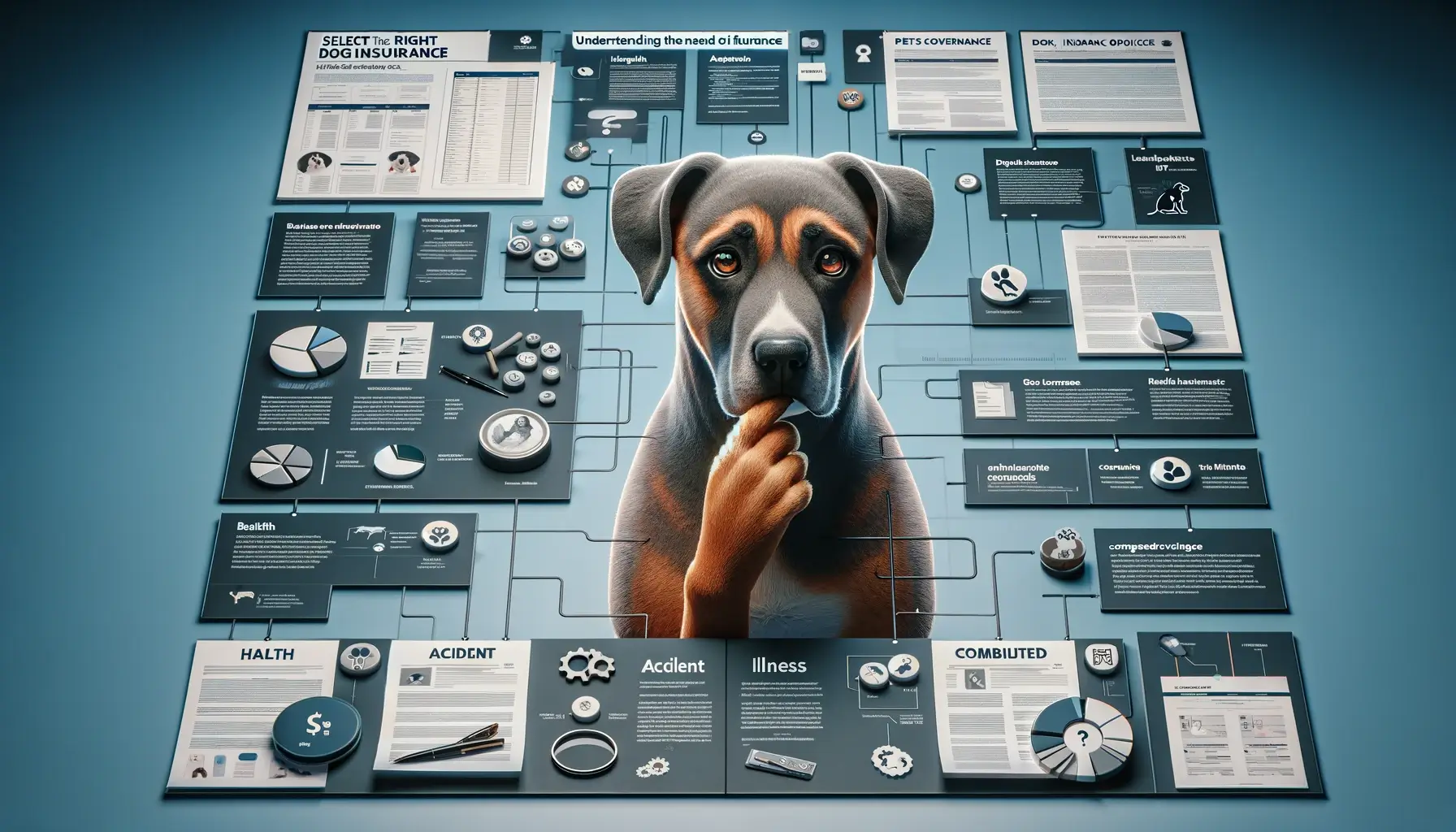So, which dog insurance should i get ?
If you’re a pet owner, you know how important it is to keep your furry friend healthy and happy. One way to do that is by investing in dog insurance. But with so many options available, it can be overwhelming to choose the right one. In this article, we’ll guide you through the process of choosing the best dog insurance for your pet.

Why You Need Dog Insurance
Dog insurance can help you cover the cost of unexpected veterinary bills. It can also give you peace of mind knowing that you’ll be able to provide your pet with the care they need if they get sick or injured. However, not all dog insurance policies are created equal. That’s why it’s important to do your research and choose a policy that fits your pet’s needs and your budget.
When considering why you need dog insurance, it’s important to understand the potential costs of veterinary care. According to the American Pet Products Association, Americans spent over $30 billion on veterinary care in 2020[1]. This includes routine care, such as vaccinations and check-ups, as well as emergency care for accidents and illnesses. Without insurance, these costs can quickly add up and become a financial burden.
Factors to Consider When Choosing Dog Insurance

Before you start shopping for dog insurance, there are a few factors you should consider:
- Your pet’s medical history: If your pet has a pre-existing condition, you’ll want to make sure that it’s covered by the policy you choose. Some policies may exclude coverage for pre-existing conditions, while others may cover them after a waiting period.
- Your budget: Dog insurance premiums can vary widely depending on the level of coverage you choose. Make sure you choose a policy that fits your budget and that you can afford to pay the premiums over the long term.
- The types of coverage you need: Some policies only cover accidents, while others cover accidents and illnesses. Make sure you choose a policy that covers the types of care your pet is most likely to need. You may also want to consider add-ons, such as wellness care or dental coverage.
When considering these factors, it’s important to balance the cost of the policy with the level of coverage you need. A policy with a lower premium may have higher deductibles or lower coverage limits, while a policy with a higher premium may offer more comprehensive coverage.
Types of Dog Insurance Policies

There are several types of dog insurance policies available, including:
- Accident-only policies: These policies only cover accidents, such as foreign-body ingestion, cuts and lacerations, fractures, bloating, and surgery. They do not cover illnesses.
- Illness policies: These policies cover illnesses, such as cancer, allergies, and infections. They do not cover accidents.
- Accident and illness policies: These policies cover both accidents and illnesses.
When choosing a policy, it’s important to understand the types of coverage offered and how they apply to your pet’s needs. For example, if your pet is young and healthy, an accident-only policy may be sufficient. However, if your pet is older or has a pre-existing condition, you may want to consider a more comprehensive policy.
How to Choose the Right Dog Insurance Policy

To choose the right dog insurance policy, you’ll need to:
- Know your pet’s medical history and your budget.
- Make a list of what matters most to you, such as the types of accidents and illnesses you want to have covered and the percentage of costs you’re able to pay.
- Obtain quotes from a few reputable providers, and compare the types of coverage to get an overview of the options in your budget.
- Read over the policies carefully to ensure they reimburse for the type of coverage you’re looking for and don’t be afraid to ask questions.
When comparing policies, it’s important to understand the details of each policy, such as the deductible, co-pay, and coverage limits. You should also consider the reputation of the insurance provider and their customer service ratings.
How to Compare Dog Insurance Policies
Comparing dog insurance policies can be overwhelming, but it’s important to do your research to find the best policy for your pet. Here are some things to consider when comparing policies:
- Coverage: Make sure the policy covers the types of care your pet is most likely to need. This may include accidents, illnesses, and routine care.
- Benefits: Look for policies that offer benefits such as wellness care, prescription medications, and alternative therapies. Some policies may also offer coverage for dental and vision care.
- Premiums: Compare premiums from different providers to find the best value for your money. Be sure to consider the deductible, co-pay, and coverage limits when comparing premiums.
- Customer service: Look for providers with good customer service ratings to ensure a smooth claims process. You may also want to consider the provider’s reputation and financial stability.
Top Dog Insurance Providers
There are many dog insurance providers to choose from, but some of the top providers include:
- Healthy Paws
- Petplan
- Embrace
These providers offer a range of policies to fit different budgets and needs. Be sure to compare policies from multiple providers to find the best fit for your pet.
Assistance Animals and Pet Insurance
If you have an assistance animal, such as a service dog, you may be able to get coverage through your homeowner’s insurance or renter’s insurance policy. Be sure to check with your insurance provider to see what options are available.
Travel Insurance and Pet Insurance
If you travel frequently with your pet, you may want to consider a policy that includes travel insurance. This can help cover the cost of emergency veterinary care if your pet gets sick or injured while traveling.
Dental and Vision Insurance for Pets
Some dog insurance policies also offer coverage for dental and vision care. This can be especially important for breeds that are prone to dental problems or eye issues. When considering dental and vision coverage, be sure to understand the details of the policy, such as the coverage limits and any exclusions.
Tables
Here are two tables with some facts about dog insurance:
Table 1: Types of Dog Insurance Policies
| Policy Type | Coverage |
|---|---|
| Accident-only policies | Accidents, such as foreign-body ingestion, cuts and lacerations, fractures, bloating, and surgery |
| Illness policies | Illnesses, such as cancer, allergies, and infections |
| Accident and illness policies | Accidents and illnesses |
Table 2: Top Dog Insurance Providers
| Provider | Coverage | Benefits |
|---|---|---|
| Healthy Paws | Accident and illness | Unlimited lifetime benefits, no annual or per-incident limits, coverage for hereditary and congenital conditions |
| Petplan | Accident and illness | Coverage for dental and behavioral issues, no lifetime or per-condition limits, coverage for alternative therapies |
| Embrace | Accident and illness | Coverage for dental and orthodontic care, no per-incident limits, coverage for alternative therapies |
In conclusion, choosing the right dog insurance policy can be a daunting task, but it’s important to do your research to find the best fit for your pet. By considering factors such as your pet’s medical history, your budget, and the types of coverage you need, you can find a policy that will give you peace of mind knowing that your furry friend is covered.
Citations:
[1] https://www.opm.gov/healthcare-insurance/healthcare/plan-information/compare-plans/fedvip/Plans?DentalOrVisionSelection=Dental&FFSSearch=on&IncludeNationwide=True&Medicare=False&ZipCode=15063&payPeriod=c
[2] https://content.naic.org/sites/default/files/publication-pin-op-pet-insurance.pdf
Hi, I’m John and I love dogs. Ever since I was a kid, I always wanted to have a furry friend by my side. I grew up with a golden retriever named Max, who taught me a lot about loyalty, friendship, and fun. He was my best buddy for 12 years, and I miss him every day.
